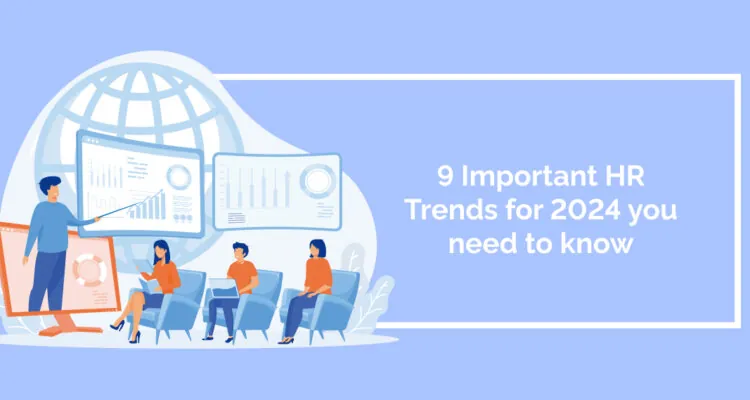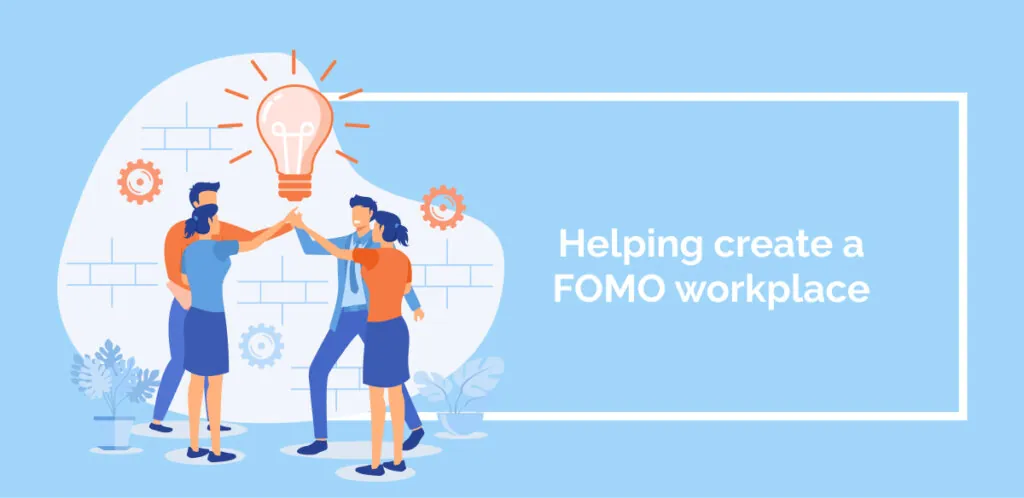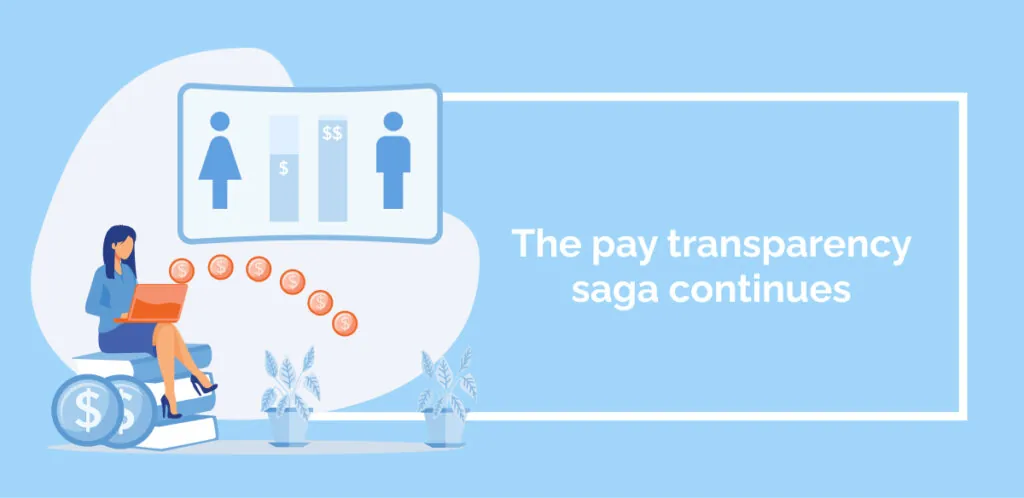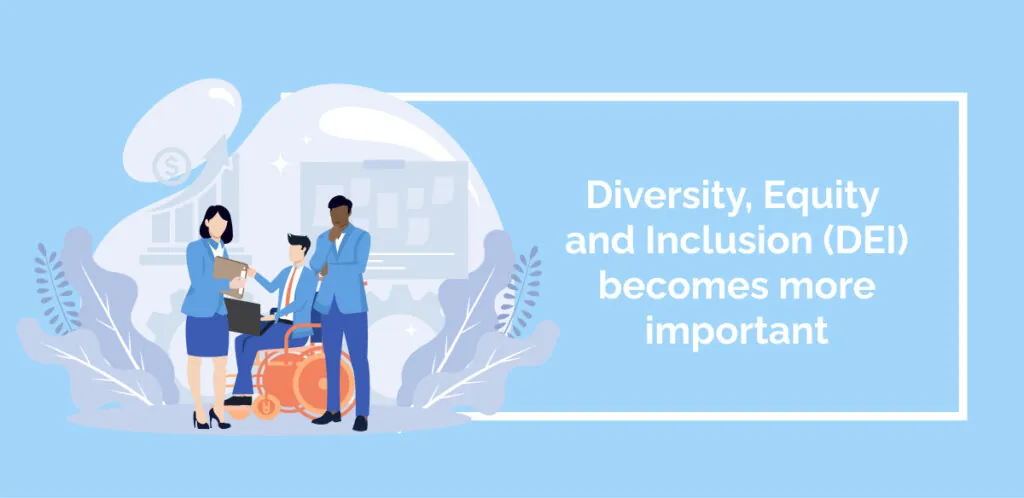
This guide aims to highlight nine key HR trends for 2024. These trends are essential for HR professionals to focus on as they strive to create an employee-centric workplace.
This article will include a discussion on trends like:
- Reskilling and upskilling
- Pay transparency
- Hybrid working
- Change management
- Diversity, equity, and inclusion
- Employee wellbeing
1. Upskilling and reskilling employees through continuous learning
In the wake of widespread digital transformation, the skill sets required for employees to excel in their roles constantly evolve. Employers who emphasize continuous learning stand to gain direct benefits like enhanced workforce readiness and organizational agility and indirect advantages, including improved employee retention, longer tenure, and attracting higher-quality job candidates.
The vital nature of continuous learning makes the HR department more critical within an organization. HR, when overseeing learning and development (L&D) processes, can collaborate closely with department heads to ensure that L&D initiatives are specifically designed to cater to the specific needs of each team or function, thereby maximizing their impact.
Additionally, research from Bain & Company underscores that upskilling and reskilling initiatives should encompass the entire workforce, including older employees. Tailoring training programs to make work more engaging and fulfilling for all age groups enhances individual job satisfaction and contributes to a more dynamic and versatile workforce.
By focusing on comprehensive and inclusive learning strategies, HR can drive organizational growth and adaptability in an ever-changing business landscape.
2. Understanding that HR can still make a difference
The 2024 State of People Strategy Report from Lattice reveals that nearly half of the surveyed companies have experienced layoffs, leading to widespread low morale, including within HR departments.
As a result, many HR professionals are grappling with challenges in defining their role and impact on broader business outcomes. One of the critical areas of concern, particularly in the wake of these layoffs, is the confidence in managers’ skills, knowledge, and training regarding performance reviews and compensation discussions.
Even in such an economic climate, HR departments can make an important impact by focusing on employee engagement and performance. This approach involves prioritizing the right resources, training, and opportunities that enable employees to engage in work they are passionate about. Such engagement can drive improved performance, which benefits broader business outcomes.
Additionally, enhancing employee engagement is a strategic move for improving staff retention and reducing the tendency for job-hopping. HR can cultivate a more committed and motivated workforce by investing in employees’ professional growth and satisfaction.
This, in turn, contributes to a positive organizational culture and better overall performance, aligning with the broader objectives of the business.
3. Helping create a FOMO workplace

In the evolving work landscape, the future workplace is increasingly shaped by task completion and the need to incentivize office commutes, especially considering that the average commute can be 25 minutes or more.
This shift places a significant onus on HR departments to assist organizational leaders in crafting an employee-centric workplace environment. The focus should be on creating unique, office-specific experiences that can’t be replicated remotely. These could include initiatives like communal breakfasts, team social events, or interactive in-person workshops.
The goal is to make office attendance appealing for employees, offering them opportunities for connection, growth, and enrichment beyond their day-to-day tasks. HR departments play a vital part in managing and evaluating these changes, striving to balance productivity and fostering a vibrant social and collaborative atmosphere.
By doing so, they can create a workplace that facilitates efficient work and places a high value on social interaction and community building. This approach is key to adapting to the new norms of hybrid working while maintaining a positive and engaging office culture.
4. Utilizing AI and analytics to advance organizational needs
Predictive analytics and generative AI will continue revolutionizing the HR field, enabling them to shift to a proactive manner when managing employees. Using data through these technologies strategically allows HR teams to anticipate and address workforce needs more effectively.
Generative AI, in particular, is becoming a vital tool in streamlining HR and payroll tasks, simplifying complex processes, and helping leaders focus on their employees while scaling operations without necessarily increasing resources.
For example, generative AI can enhance the recruitment process by assisting in the creation of more precise and effective job descriptions. This leads to quicker and more accurate talent acquisition.
A case study by Deloitte highlights the use of predictive analytics in developing a model that enabled leadership to predict retention rates among sales employees. This kind of predictive insight is invaluable for strategic planning and employee engagement.
However, with the increasing reliance on generative AI, ethical considerations and compliance with relevant regulations become crucial. Organizations must ensure that their use of AI aligns with ethical standards and legal requirements, particularly in data privacy, bias prevention, and transparency. This ethical and compliant approach is essential for maintaining trust and integrity in using AI in HR processes.
Furthermore, HR departments must factor in the employee experience when integrating AI into workplace practices. Qualtrics research highlights that while many employees are comfortable with AI handling routine, menial tasks, they prefer human interaction for more complex and personal matters. This shows that employees still want technology that complements rather than replaces human work.
5. The pay transparency saga continues

The movement towards pay transparency, crucial in advancing pay equity, will continue gaining momentum in the new year. This is particularly evident as more states and localities enact legislation that mandates organizations to disclose salary information in job postings and to employees upon request.
In response, HR departments must collaborate with senior leadership to prepare for these changes effectively. This preparation involves compiling a comprehensive set of appraisal data to guide decision-making, developing a compliance plan to adhere to new regulations, and crafting a clear communications strategy to manage responses and inquiries.
Globally, there are approximately 18 different types of pay transparency policies. The next logical step in this evolution could be to include other forms of compensation, such as bonuses, in these transparency efforts.
For instance, aligning variable compensation, like bonuses, with business performance offers a dynamic way to reward employees for their contributions continually. This approach fosters a sense of recognition and appreciation among employees. It can be a strategic move to reduce employee churn, as they are less likely to leave when they feel valued and fairly compensated for their efforts.
6. Hybrid work is the new normal
Although numerous companies remain convinced that the in-office work model enhances business performance, a survey conducted by Harvard Business Review indicates a different trend. According to this survey, executives anticipate fully remote and hybrid work models will maintain popularity through 2028.
This projection implies a significant role for HR departments in the coming years. They must collaborate closely with organizational leadership to explore and embrace a hybrid working model. This model might include provisions for employees to work from home at least two or three days a week.
For successful implementation, it’s crucial that an organization clearly defines what ‘hybrid’ means within its context. This clarity ensures that all employees understand the expectations and parameters of the hybrid work model.
Furthermore, HR departments should facilitate discussions between team leaders and their members to determine the necessary workspaces, tools, and resources to implement this hybrid arrangement effectively.
These conversations are vital in ensuring the transition to a hybrid model is smooth, efficient, and tailored to meet the organization’s and its employees’ needs.
7. Change management can be a new HR component
HR departments, especially smaller and mid-sized companies, often play a more significant role in employee interactions. Consequently, they are increasingly tasked with overseeing change management initiatives.
HR may be involved in assessing and implementing digital adoption tools as part of this responsibility. The design of these tools can facilitate employees’ adjustment to new changes, offering resources like knowledge bases, interactive walkthroughs, or personalized tooltips.
Digital adoption solutions also allow HR to monitor the effectiveness of change in real-time, observing how employees adapt to new processes or technologies. This real-time tracking is crucial for making necessary adjustments and ensuring smooth transitions.
Moreover, HR might take on the role of training team leaders to act as change agents. This involves equipping leaders with the skills and knowledge to guide their teams through change, aiming to reduce the time it takes for employees to adapt and lower change fatigue risks to new initiatives.
After implementing a change management process, it’s common for HR to gather feedback to evaluate the impact and effectiveness of the change. HR can collect this feedback through various ways like surveys, focus groups, or one-on-one interviews.
Such feedback is invaluable for HR to understand employee experiences and perceptions, allowing for continuous improvement in future change management strategies.
8. Diversity, Equity and Inclusion (DEI) becomes more important

Innovation is vital for companies to navigate periods of change and emerge more robust effectively. Companies can distinguish themselves by actively promoting workplace diversity, equity, and inclusion (DEI) culture. Such commitments can spark beneficial discussions about DEI, leading to positive shifts in corporate culture.
When employees from all backgrounds feel valued and respected, it enhances their happiness and well-being, both mentally and physically, thereby boosting their work performance.
Evidence supporting this approach comes from a BCG survey, which found that a solid commitment to DEI enhances employee satisfaction and significantly improves retention rates. Employees who feel free to be authentic at work are more likely to stay with their employer.
The survey also indicates that progress in DEI can be accelerated through the involvement of senior leadership. By collaborating with senior leaders, HR departments can make more significant strides in fostering a workplace culture that enhances the employee experience.
Further supporting this, research from Bain & Company reveals that companies with a solid commitment to DEI demonstrate greater agility and adaptability to change.
These companies cultivate a more positive culture and tend to perform better financially. This highlights the broader impact of DEI initiatives, extending beyond the immediate workplace environment to influence overall business success.
9. The focus on employee wellbeing is still vital
Workplace stress continues to escalate, placing an increasing responsibility on HR departments to cultivate work environments that promote well-being. Stress in the workplace not only affects the individual employee but also extends to their interactions with friends, family, and colleagues.
Recent findings from the Future Forum highlight this concern, revealing that over 40% of workers globally are experiencing burnout, disproportionately impacting women and younger employees.
Additionally, while Gallup’s research indicates a surge in global employee engagement, particularly in regions like the Caribbean and the United States, the rise in employee stress still remains a significant issue.
This stress is linked to reduced productivity and various physical and mental health challenges. These findings underscore the need for HR departments to intensify their efforts in addressing stress and burnout.
This may involve working with the broader organization to reduce the workload and long hours required for a job, as a Deloitte study showed that this can get in the way of bettering well-being.
This type of initiative further strengthens the importance of aligning HR with bigger business goals, as an improved sense of wellbeing can lead to a better ROI.
Final thoughts on HR trends for 2024
In today’s intricate and demanding environment, HR teams must adopt a more strategic approach, particularly in addressing issues centered around employees. This strategic focus involves understanding employees’ underlying challenges and developing essential skills that promote internal mobility and retention.
Additionally, HR teams must assist the broader organization with prioritizing and actively committing to fostering well-being and diversity, equity, and inclusion (DEI) within the organization.
Alongside these human-centric initiatives, embracing new technologies is essential for HR teams. Integrating innovative tech solutions can significantly enhance productivity and improve employee experience.
By balancing a deep understanding of employee needs with developing relevant soft skills and adopting the right advanced technology, HR teams can more effectively navigate the complexities of the modern workplace.
WalkMe Team
WalkMe spearheaded the Digital Adoption Platform (DAP) for associations to use the maximum capacity of their advanced resources. Utilizing man-made consciousness, AI, and context-oriented direction, WalkMe adds a powerful UI layer to raise the computerized proficiency, everything being equal.



